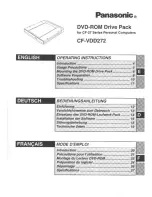
Summary
Preface
P. 6
Chapter 2
P. 17
Technical data
Chapter 5
P. 76
Reception, storage
and installation
Chapter 4
P. 54
General information
Chapter 3
P. 47
Application notes
Chapter 6
P. 115
Options
Chapter 7
P. 129
Preventive maintenance
Chapter 1
P. 15
Overview
and installation diagram
Answer Drives 1000
106
5
Category C4:
For use in the second environment, which meets at least
one of the following points:
• Rated voltage >_ 1000 V
• Rated current >_ 400 A
• Connection to an IT network
• The required dynamic performance will be limited as a result of filtering.
An EMC plan must be prepared!
5.9.1.3 SOLUTIONS USED TO ENSURE COMPLIANCE
WITH EMISSIONS
Emissions can be divided into two types: radiated and conducted.
The disturbances can be emitted in different ways. Conducted
disturbances can propagate to other equipment through all the conductive
parts, including cables, grounding and the metal frame of the cabinets.
Conducted emissions:
They can be reduced in the following way:
With RFI filters for high frequency disturbance Using surge suppressors
to the coils of relays, contactors, solenoid valves, etc. to mitigate the
formation of sparks during switching.
Using ferrite rings at the power connection points.
Radiated emissions:
In order to prevent disturbance transmitted through
the air, all components of the electric drives must constitute a Faraday
cage to counteract radiated emissions.
Electrical drives include also cabinets, auxiliary boxes, cabling, motors, etc.
The following is a list of some methods to ensure the continuity of the
Faraday cage:
Cabinets:
• The cabinet must have an unpainted corrosion finish at all points
of contact with other plates, doors, etc.
• All contacts between metals must be free of paint, with conductive
gaskets if necessary.
• Use unpainted installation plates, connected to the common grounding
point, ensuring that all of the individual metal components are firmly
connected, in a single grounding path.
• Use conductive gaskets in correspondence of doors and covers.
It is appropriate to fix the covers at intervals not exceeding 100 mm in
the points where radiation could escape.
• Separate the “dirty side” from the “clean side” relative to the radiation
disturbance using metal covers and a specific design.
• Minimize the presence of openings in the cabinet.
• Use materials with good attenuation properties, for example plastic
material with conductive coating if it is impossible to use a metal cabinet.
Wiring:
• Use special HF cable inputs for high frequency grounding of
cable screens.
• Use conductive gaskets for HF grounding of the control cable screens.
• Screen all cables of the power supply and control unit. Observe the
specific manuals of the individual products.
• Position the power supply and control unit cables separately.
• Use twisted pairs to avoid common mode disturbances.
• Use ferrite rings for common mode disturbances, according to the need.
• Select and position the internal wires correctly.
Installation:
• The auxiliaries used with complete drive modules must be produced with
CE marking in accordance with the EMC directive and the Low Voltage
Directive, NOT ONLY with reference to the latter, unless they are exempt,
for example, when used with a component with no direct function.
• Select and install accessories in accordance with the manufacturer’s
instructions.
• Ground to 360° on the motor axis. See the specific manuals of
the individual products
• Correct internal wiring methods.
• Special attention must be given to grounded.
5.9.2 RFI FILTERS FOR RADIO FREQUENCY
INTERFERENCE
The EMC emission limits for PDS depend on the installation environment,
on the type of power supply network and on the drive power.
RFI filters are used to attenuate conducted disturbances in a connection
point of the line where the filter grounds all disturbances.
RFI filters are required when the electric drive is connected to a public
low-voltage power supply network (first environment).
If there is the possibility that the neighbourhood equipment could be
damaged by emissions, it is recommended to use filters in industrial
installations (second environment), although the product standard
currently does not impose any limits on emissions.
5.9.1.3 SOLUTIONS USED TO ENSURE COMPLIANCE WITH EMISSIONS - 5.9.2
Summary of Contents for AD1A008FBBNH
Page 138: ......
















































